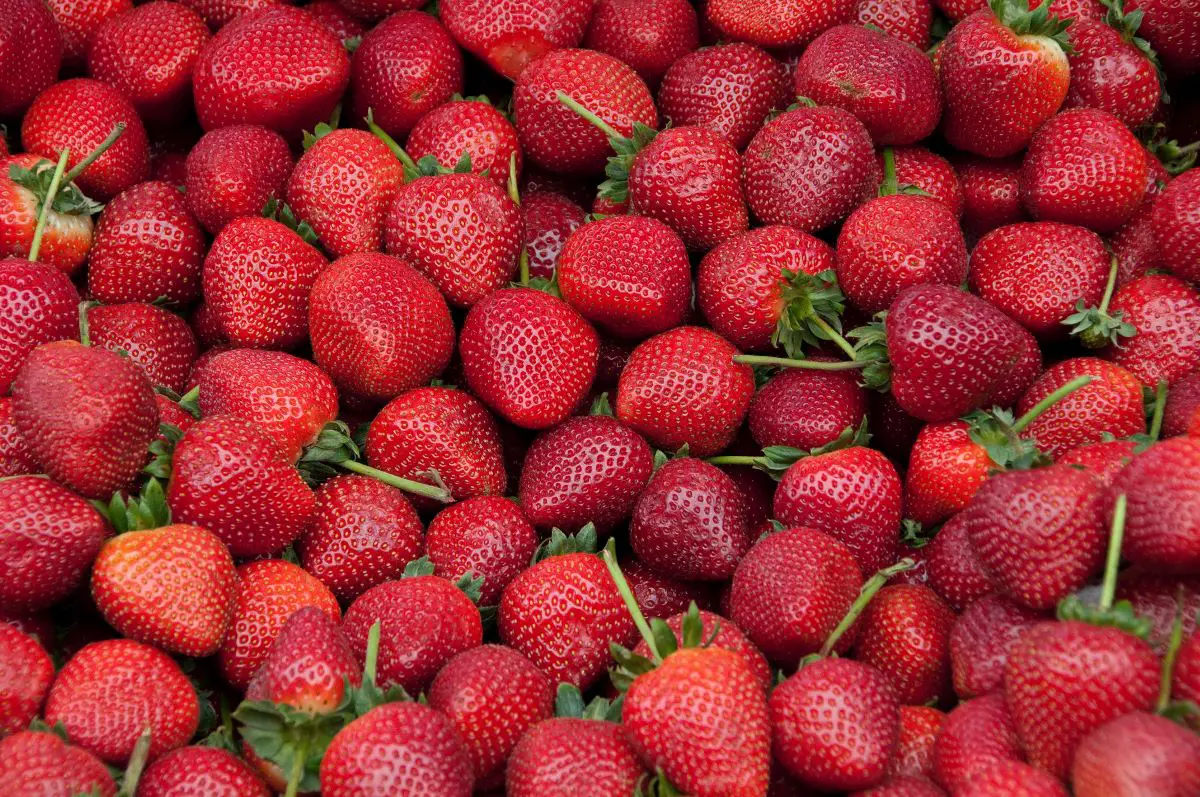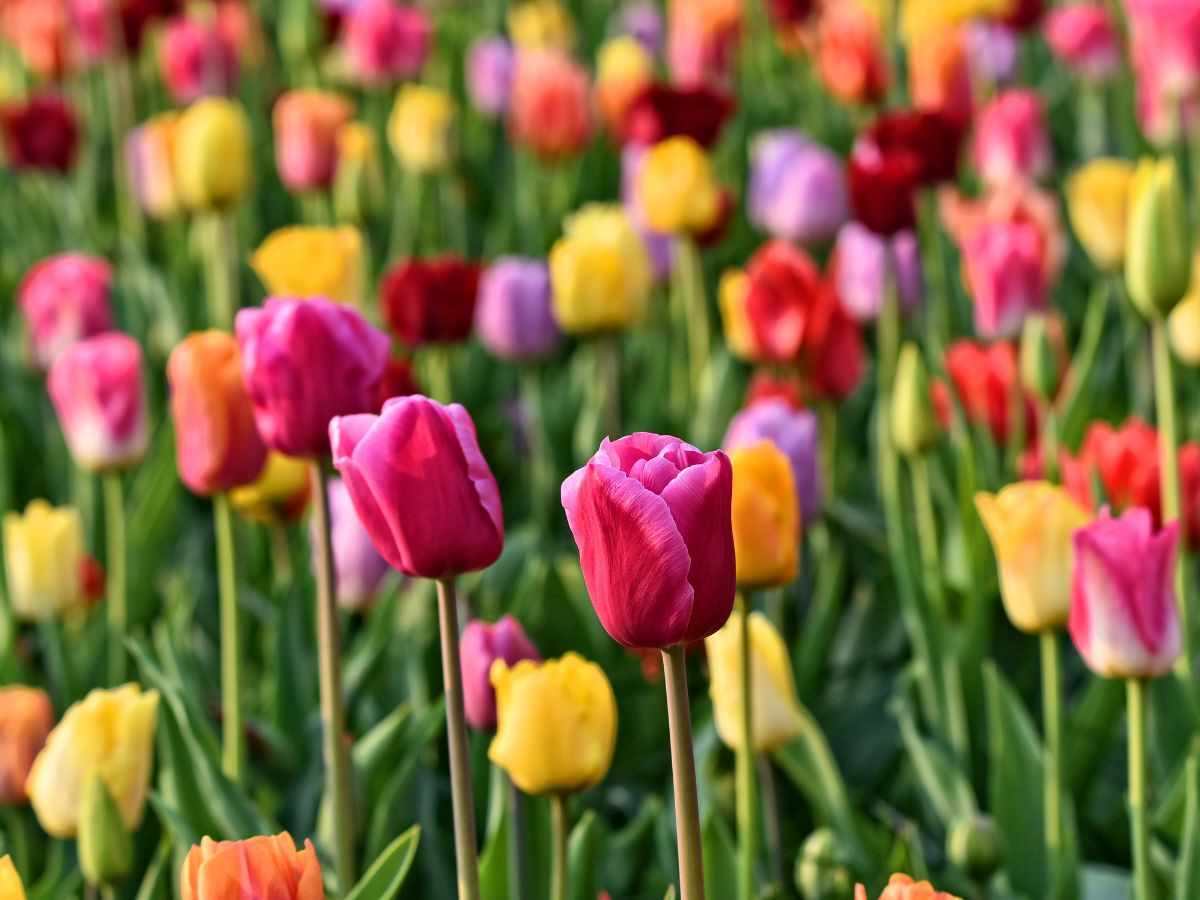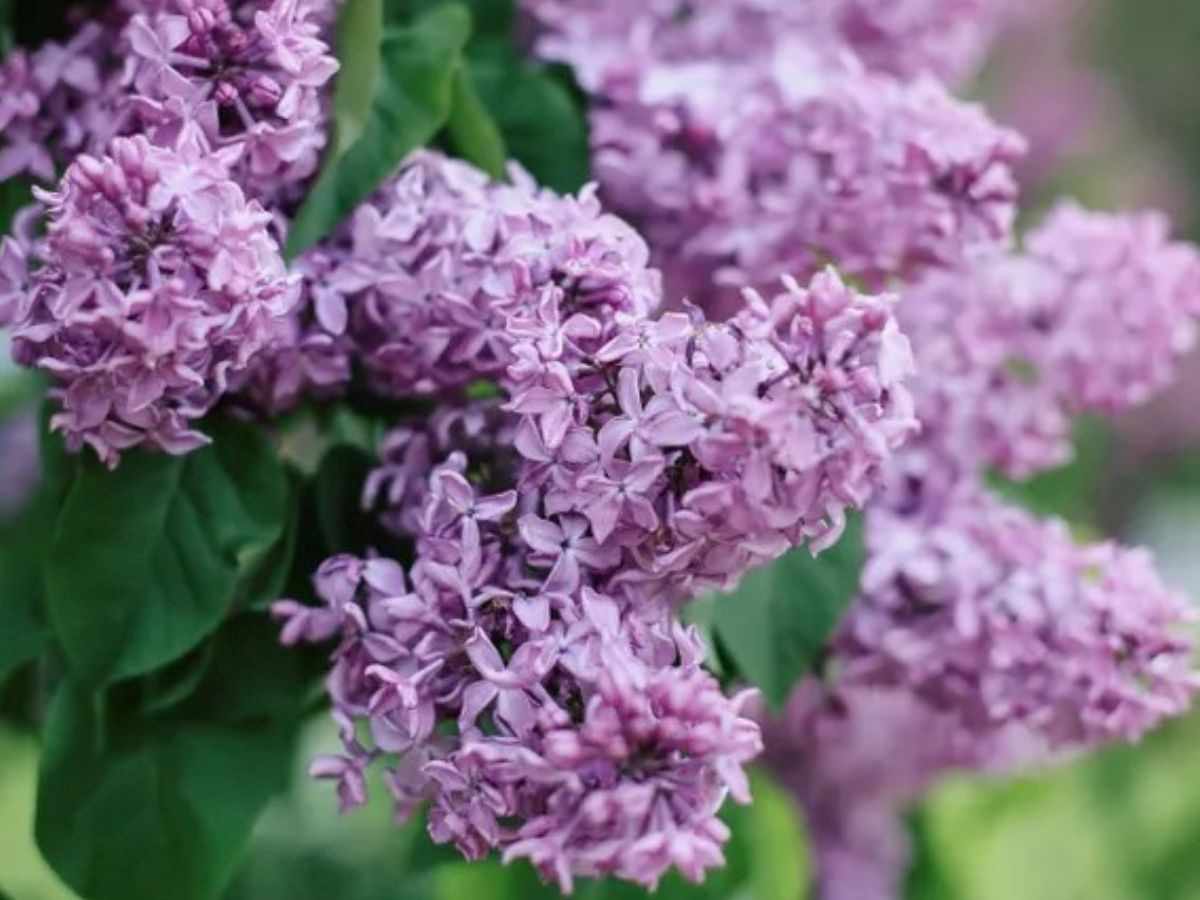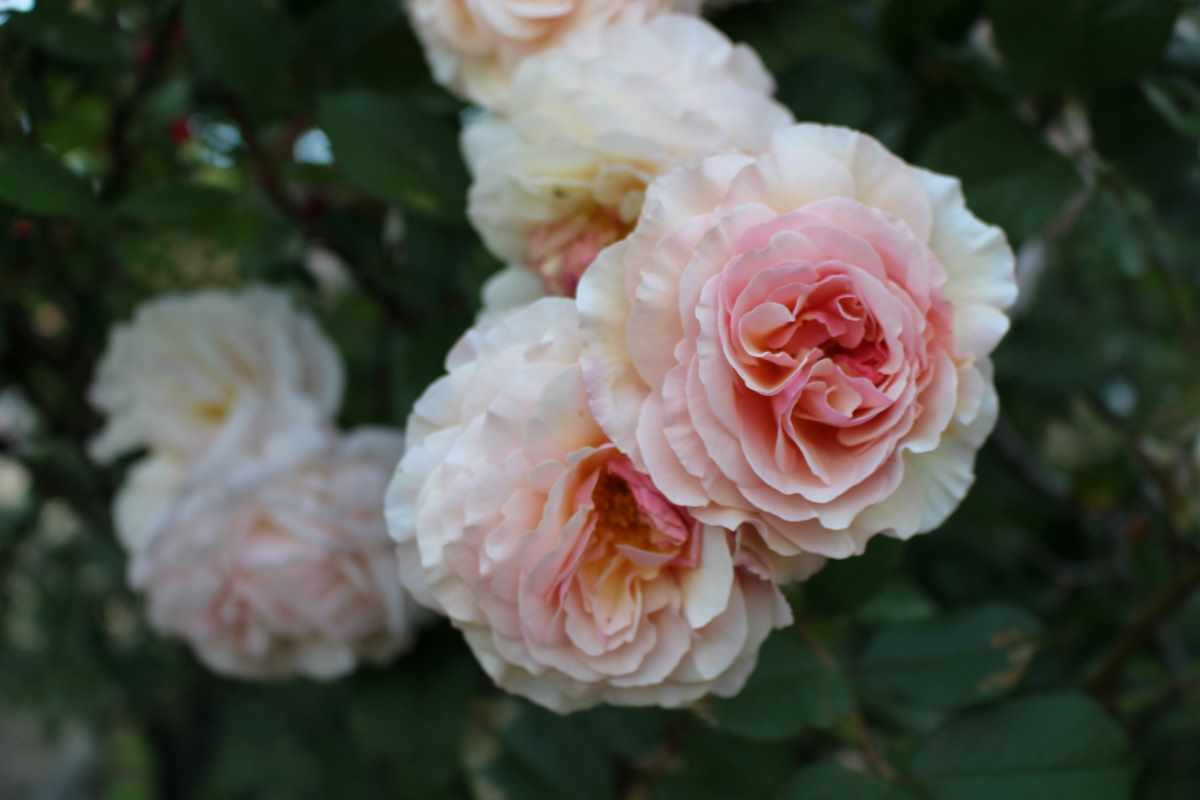Learn how to grow strawberries in this comprehensive guide. Growing your own strawberries allows you to control what goes into them and onto them. In this guide, you will learn how to plant, care for, and harvest strawberries.
Table of Contents
- Bareroot Vs. Live Plants
- Choosing a Variety of Strawberries to Grow
- What Is the Best Time to Plant Strawberries
- What Is the Best Location to Plant Strawberries
- How Deep Should Strawberries Be Planted
- The Importance of Mulching Strawberries
- How to Fertilize and Care for Strawberries
- Pest Control
- When and How to Harvest Strawberries
- Sign Up to Our News Letter
- Pin this Post
- More Gardening and Recipe Related Topics
- Shop this Post
- Tell Us What You Think
- Disclosure Policy
Bareroot Vs. Live Plants

Strawberry plants can come either as potted plants, or bareroot plants.
A potted plant is a plant that has been planted in soil and is being provided with water and nutrients.
A bareroot plant is a plant that has no soil around it, but is usually stored in a medium such as sphagnum moss or sawdust to keep the roots moist.
Bareroot strawberry plants are stored in a cooler to keep the plants dormant.
How to Plant Living Strawberry Plants
Living strawberry plants can be planted at any time during the growing season, as long as you keep the plants watered and fertilized.
Potted plants need to be fertilized on a regular bases because they do not receive any nutrients from the soil except for the nutrients that you provide them with.
The ideal time of planting potted strawberries is early spring, or early to mid fall when the temperatures are cool enough and the plants have a chance to root themselves into the ground before temperatures begin to swing drastically.
However, a plant in the ground is always going to do better than a plant in a small pot. So it is better to transplant them into the ground as soon as possible.
To minimize the shock of transplanting during the heat of the summer, choose to transplant strawberry plants into the ground on an overcast day, or a drizzly/rainy day. This will provide the plants with the shade they need during their first day or two in the ground.
If you do not get overcast or rainy days in the summer, you can provide your freshly planted strawberries with some artificial shade by either propping an umbrella over them, or placing a shade cloth over them.
Keep freshly planted strawberries well watered, especially during the heat of the summer. Fertilize the soil with an organic berry fertilizer before planting the strawberries.
How to Know if Your Bareroot Strawberries Are Alive
Buying bareroot strawberries is definitely the more economical option. However, unfortunately, not all bareroot strawberries are stored in the best way.
I found that purchasing bareroot strawberries from big box stores has often been disappointing. Usually most of the plants come either dead, or with some sort of disease.
If you are planning on buying bareroot strawberries, make sure to buy your plants from a reputable source to avoid the heart ache.
You can easily tell if a bareroot strawberry is alive or dead. A living bareroot strawberry plant should have moist and pliable roots. You may also, on some occasions, see some growth coming from the crown of the plant.
If a bare root strawberry has a squishy or moldy crown, this is a good indicator that the plant is dead, or on its way to die.
Stringy dry roots, and an ultra dry crown are also an indicator of a dead strawberry plant.
How to Plant Bareroot Strawberries
Remove the plants from the medium they came in, separate them, and soak them in some cold water for one to two hours to activate the roots and give them a jump start.
Fertilize the soil with an organic berry fertilizer. Dig a whole deep and wide enough for the roots to sprawl. It is better to spread the roots out a bit during planting. Bury the roots of the strawberry plants to just below the crown of the plant. The crown should not be under the soil otherwise, the plant would rot, and hence, die.
Water bare root plants upon planting, and whenever you notice that the soil is drying up. The soil should stay moist, but not boggy. Do not overwater them. Overwatering can cause root rot and kill your strawberry plants.
Keep in mind that bare root plants do not have leaves or fruits consuming the water. So they will require less watering than living plants.
Choosing a Variety of Strawberries to Grow
There are many varieties of strawberries to grow. If you have the space, you can plant multiple varieties.
There are June-bearing strawberries, ever-bearing, and alpine strawberries.
June-bearing strawberries bear their fruit in early summer. They are great for use for creating jams, jelly, freeze drying, dehydrating, fruit rolls, and so many good things.
Ever-bearing strawberries continue to bear from early summer to late fall. They are great for snacking and have a wonderful tart flavor.
Alpine strawberries, unlike most varieties of strawberries, do not produce any runners. They can be easily grown from seed, and are great for use in containers.
What is the Best Time to Plant Strawberries
The ideal time for planting strawberries is early to mid spring when the temperatures are still cool, and the weather is rainy. The second best ideal time is early to mid fall.
Planting strawberries during the cool of the season when they have time to establish their roots is the best bet. Strawberries, along with most plants, prefer to be planted into the ground during the cool season.
When strawberries are planted during the heat of the summer, they tend to face a heat shock. This causes their leaves to burn and wilt because the roots are not established yet.
If you are planting strawberries during the heat of the summer, provide them with some shade by propping an umbrella over them, or covering them with a shade cloth to protect them from the hot sun. Do so for a week or two, until the plant has had a chance to plant its roots into the ground.
Keep the soil moist when planting strawberries in the summer to prevent the roots from burning and drying up.
What Is the Best Location to Plant Strawberries
Strawberries are a sun loving plant. However, they are also a cool weather plant. They can live in areas that range between zones 5 to 8.
If you live in these zones stated above, make sure to plant your strawberries in a full sun location. The plants need full sun in order to produce fruits. Full sun ranges between 6 to 8 hours, or more. The more sun they get, the better.
However, if you are in zone 8 and over, you might need to plant your strawberries in an area where they receive 6 to 7 hours of sun light with some afternoon shade to protect them from extreme heat.
How Deep Should Strawberries Be Planted
Strawberry plants have roots, a crown to which the roots attach to, and the leaves that stem from the crown.
The crown is tubular in shape, and can vary in thickness. It is usually brown in appearance, and covered with a papery layer.
Strawberry plants should not have their crowns buried into the soil. The crown should sit over the surface of the soil to prevent it from rotting. If the crown rots, the whole plant dies with it.
When planting strawberries, burry the root of the plant just right below the crown. You are better of having the tips of the roots exposed to save the crown, than burying the roots along with the crown.

The Importance of Mulching Strawberries
There are several reasons why mulching strawberries is important.
Strawberry plants can be attacked by numerous types of insects and pests, and most common of those are slugs. It is said, that mulching can protect strawberries from slugs. How true is that, the matter is yet to be determined.
A bowl of beer near your strawberry plants might be better at deterring slugs than mulch. Beer attracts slugs, they drink it, and drown in it. Simple.
However, mulching strawberries is important for two reasons.
The number one and most important reason is preventing the fruits from rotting. When strawberry fruits touch the surface of the soil, as they mature, they mold and rot. To prevent that from happening, apply a thick layer of mulch to protect the fruits from touching the soil.
The second reason is keeping the roots of the plants cool, and keeping the soil moist. Strawberries do not like to be in wet soil, but they do need moist soil, especially during the fruiting season.
Mulching minimizes the amounts of time that you need to water your plants.
How to Fertilizer and Care for Strawberries
As most fruiting plants, strawberries require phosphorus and potassium to enhance fruit production. A moderate amount of nitrogen is also required for the vegetative growth of the plant. However, Applying too much nitrogen can cause the plant to have excessive vegetative growth and small or no fruits.
Excess nitrogen can also cause the plant leaves to burn. You can see those signs with browning and crisping at the edges of the leaves.
Strawberry plants prefer a PH of 5.3 to 6.5. If your Soil PH is higher than what the plant needs, you can apply soil acidifier to improve the PH of your soil.
If your soil PH is lower than the recommended PH, you can adjust it by adding garden lime to the soil.
It is important to note that both soil acidifier and garden lime take time to change the PH of the soil. If possible, amending the soil with either one, depending on your soil PH, a year prior to planting, with constant soil testing and amendment, is best.
You can also choose to fertilize your berries with an organic berry fertilizer. This kind of fertilizer is specifically designed for berries, and will add some soil acidifier to your soil. A soil test is still recommended, even with the use of an organic berry fertilizer.
Strawberries also like a moist, well draining soil, but they do not like to sit in wet, or muddy soil. Provide your plants with adequate water depending on your climate.
Pest Control
Strawberries have numerus amounts of pests. There are the insects that attack the buds, those that attack the stem, and those that attack the fruits. In addition to insects, strawberries are a favorite of many creatures such as chipmunks, squirrels, mice, birds, and the list goes on.
You can choose to protect your strawberries with a row cover.
There are two different types of row covers.
One that is an extremely breathable row cover, and protects from larger insects and animals,
and another that is a thick or frost row cover that can protect from most insects and animals, with exception to insects that are soil born.
Another method of protecting your strawberry plants is by spraying an organic pesticide. Some of these organic pesticides, are BT (which is a natural soil born bacteria that kills bugs when they ingest it), Neem oil (derived from Neem trees), and diatomaceous earth (a powder that is made from the fossilized remains of tiny, aquatic organisms called diatoms).
You can Learn more about diatomaceous earth on the National Pesticide Information Center’s Website.
When and How to Harvest Strawberries

Strawberries are ripe when most of the fruit turns red, and a small circle at the top of the fruit, where it’s connected to the stem, is white. If you wait any longer the fruit might get too ripe, and become mushy.
You can also harvest strawberries when they are not fully ripe. That is my favorite way of eating them because I personally do not like sweet fruits, with exceptions to figs and persimmons.
Harvest strawberry fruits at the stem right above the fruit’s green cap.
Strawberry fruits can be frozen, freeze dried, dehydrated, turned into fruit rolls, made into jelly, pies, and the list goes on. Strawberries are an amazing fruit. They are full of antioxidants, and have so many uses.
Sign Up to Our News Letter!
Pin This Post!

More Gardening and Recipe Related Topics
Shop This Post
extremely breathable row cover
Tell Us What You Think!
Strawberry fruits can be frozen, freeze dried, dehydrated, turned into fruit rolls, made into jelly, pies, and the list goes on. Strawberries are an amazing fruit. They are full of antioxidants, and have so many uses.
What is your favorite way of consuming strawberries? What types of strawberries are you thinking about growing, or are currently growing? And what has your experience been in growing strawberries so far?
Disclosure Policy
Disclosure: Some of the links in this post are “affiliate links”. This means if you click on a link and purchase the item, I will get an affiliate commission. It will not cost you any extra money, but it will help me pay for this website, and it will help me to keep providing you with helpful articles such as this one. I only post links to products that I personally use and love, or to products that I wish I could have, and that could be of value to you. The information that I provide you with, my blog, videos, and many resources are free.





Be the first to reply